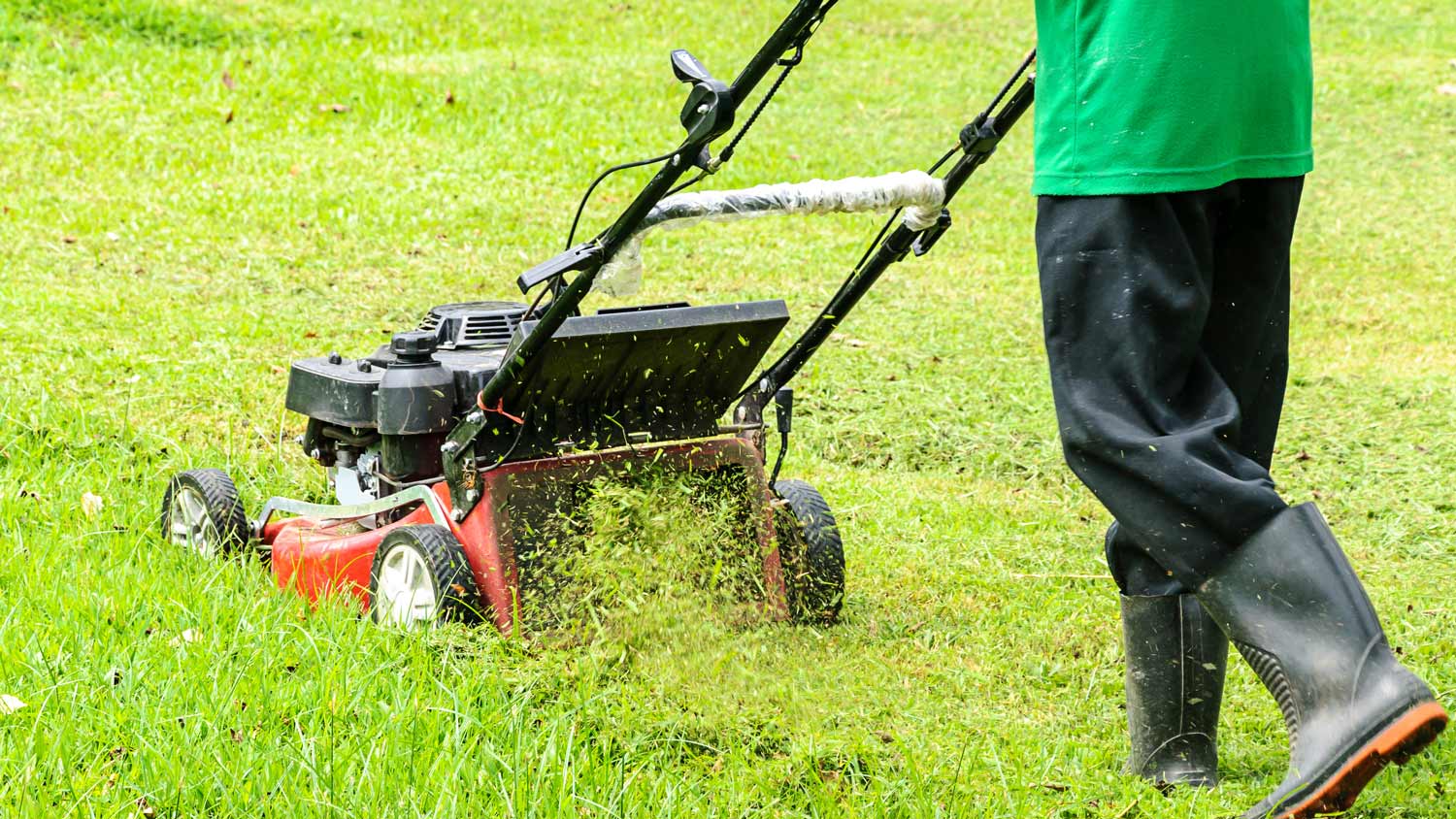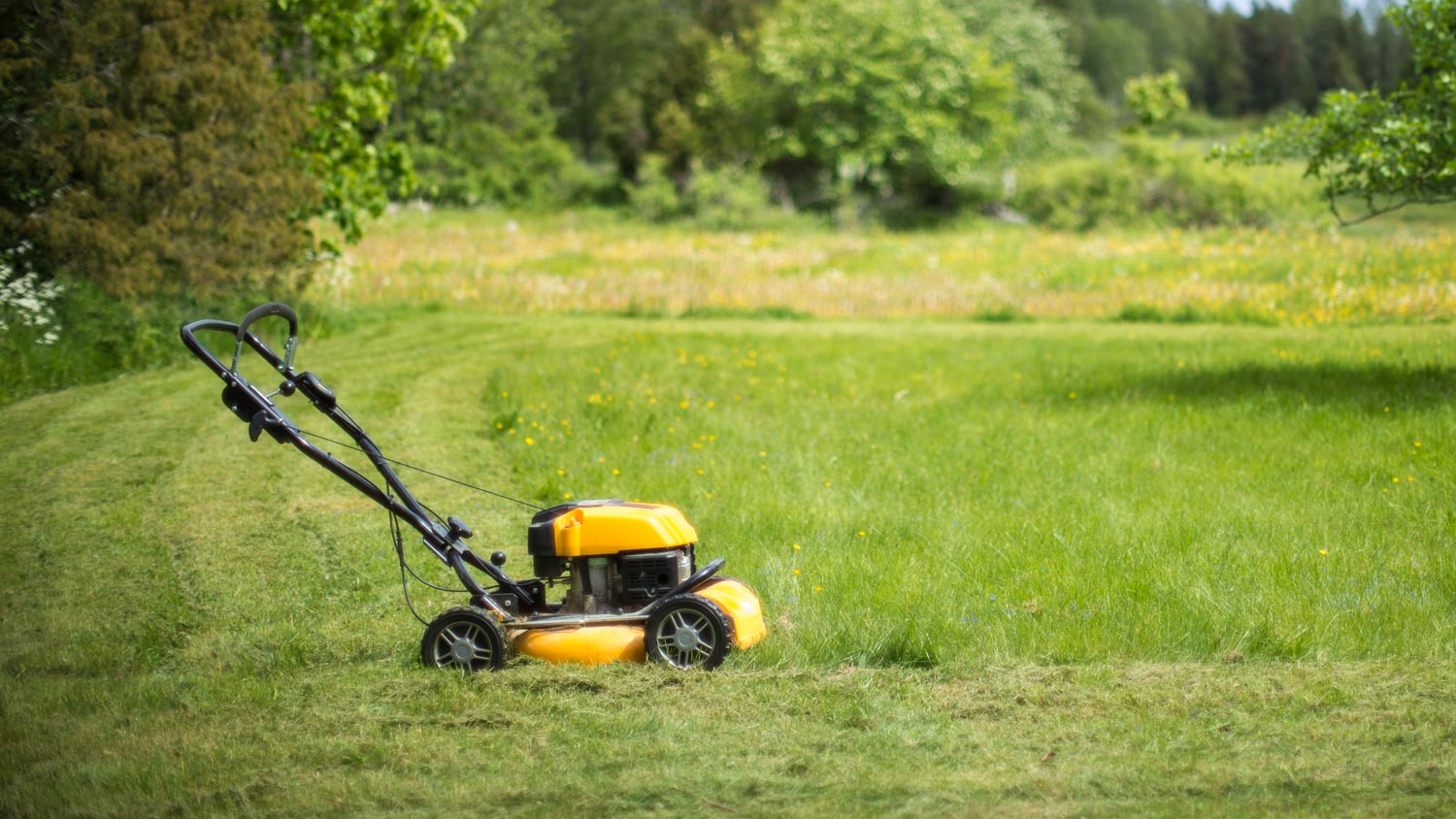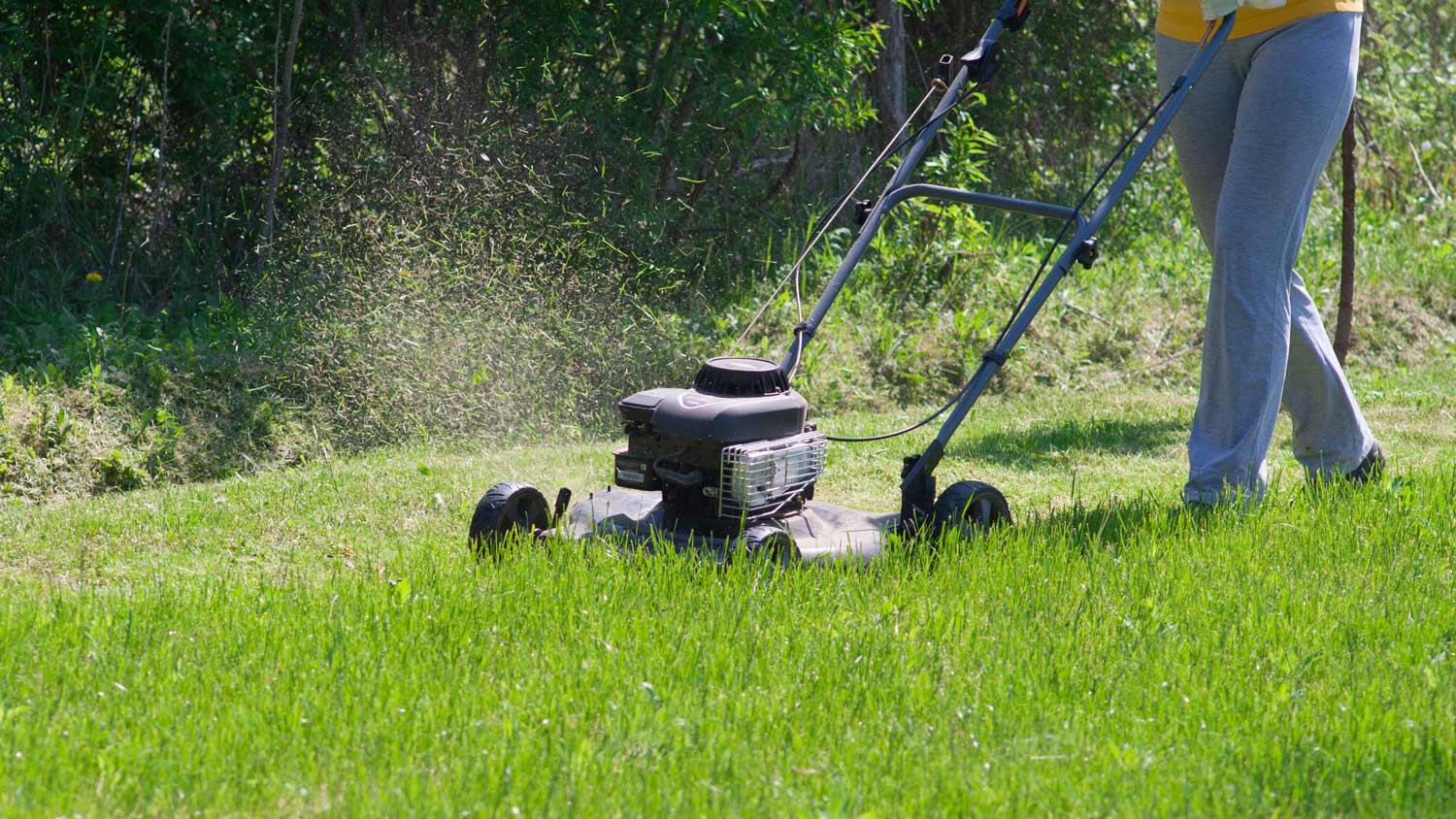
Your total lawn care cost depends on several factors, including the type of service and lawn size. Our guide will cover what you can expect to pay for lawn care.
To dethatch or not to dethatch? Here’s what you should know


Dethatching is the removal of excess thatch from your lawn.
Dethatching can promote lawn health while keeping away lawn pests and diseases.
Professional dethatching services cost between $100 and $700.
Most good things have potential drawbacks—and dethatching is no exception. That’s why it’s important to weigh the pros and cons of dethatching your lawn before diving into this yard service.
Dethatching can boost your lawn’s health, but only when done correctly and under the right circumstances. This informative guide will discuss the advantages and disadvantages of hiring a local lawn service to dethatch your lawn, helping you to make an informed decision.
Great experience from start to finish. They responded to my inquiry quickly and came out to give me a quote the same day. My yard was overgrown with weeds and needed lots of trimming. The guys came out and pulled all of the weeds by hand to get them out by the roots and trimmed up nicely. They were able to come up with a treatment plan within my budget to get my lawn and yard looking great again. Very professional, efficient and knowledgeable.

Dethatching your lawn is the process of removing excess thatch from your grass. Thatch is a layer of living and dead stems, leaves, and roots. This organic matter forms between the grass and soil, and a normal amount can help keep your lawn healthy. However, too much thatch can prevent water, air, insecticide, and fertilizer from reaching the soil, which can cause serious problems for your lawn. Consult a local lawn care service about whether dethatching is right for your lawn.
| Pros of Dethatching | Cons of Dethatching |
|---|---|
| Promotes lawn health | Costly and time-consuming |
| Keeps pests away | May disrupt beneficial bacteria |
| Prevents grass diseases | Can harm your lawn if done incorrectly |

Consider the benefits of dethatching your lawn.
Since thatch acts as a barrier between the grass and soil, a layer of thatch that’s too thick can restrict the movement of air, water, and nutrients into the roots, which negatively impacts soil health. Dethatching can improve lawn health by improving drainage and reducing compaction.
A thick layer of thatch provides the ideal habitat for insects to lay eggs because of its high humidity when wet and abundant food source of organic matter. Removing unnecessary thatch can deter lawn pests, boosting your lawn’s health and keeping these pesky critters off your grass.
Thatch is an ideal breeding ground for fungal pathogens because of its moist and humid condition. Pathogens like mold and fungi can lead to grass disease. Dethatching can help to fight against grass disease by removing the conditions that are easily susceptible to disease.

Consider some downsides of dethatching your lawn.
Dethatching can be an expensive lawn maintenance project, depending on the size of your yard and the level of thatch. The cost of dethatching ranges from $100 to $700 on average. Your exact cost will depend on several factors, including whether you hire a lawn care professional, the size of your lawn, and the cost to rent or buy dethatching tools.
Though bacteria can get a bad reputation, some of them are healthy and work to keep your lawn in tip-top shape. Dethatching can disrupt the soil’s natural microbial activity and pH levels, depriving your lawn of essential nutrients and organic matter. Consult a lawn care professional about testing your soil to confirm dethatching is the right next move for its health.
Dethatching can damage your lawn if it’s done improperly or at the wrong time. For example, you should avoid dethatching while the grass is dormant or stressed as it can cause permanent damage. So if you’re doing a DIY job, make sure to use dethatching tools correctly or hire a lawn care professional to ensure your lawn stays safe.
While lawn aeration doesn’t replace dethatching, it can be an alternative project that puts less stress on your lawn. Aeration helps to loosen compacted soil, making it easier for air and water to reach the roots.
If your lawn doesn’t have much thatch buildup, you may be able to skip dethatching altogether and opt for aeration instead. Most lawn care pros will recommend performing both aeration and dethatching to maximize your lawn’s health.
While dethatching has its advantages and disadvantages, it plays a vital role in maintaining a lush, healthy lawn. As a general guideline, consider dethatching if your thatch is more than half an inch thick. For optimal results, you’ll want to dethatch during the growing season, not when your lawn is dormant or stressed.
If you’re unsure whether or not dethatching is best for your lawn, hire a local lawn care service. A lawn care pro can help you come up with a quality lawn care plan and perform any needed services, including dethatching.
From average costs to expert advice, get all the answers you need to get your job done.

Your total lawn care cost depends on several factors, including the type of service and lawn size. Our guide will cover what you can expect to pay for lawn care.

The cost to renovate your lawn depends on the extent of the damage. Our guide will show you how much lawn renovation costs.

Removing an old lawn is often necessary to plant new grass or build a new outdoor structure. Find out what to budget for your lawn removal cost.

A lush lawn doesn't have to be an unattainable luxury. Use this guide to learn how to fix patchy grass throughout your yard.

Resembling scrambled eggs, dog vomit slime mold is an unsightly—but nontoxic—nuisance. Learn how to get rid of dog vomit slime mold in a few easy steps.

Professional lawn care is one of the best things you can spend money on to maximize curb appeal. Ask these lawn care questions to make sure you get the services you need.